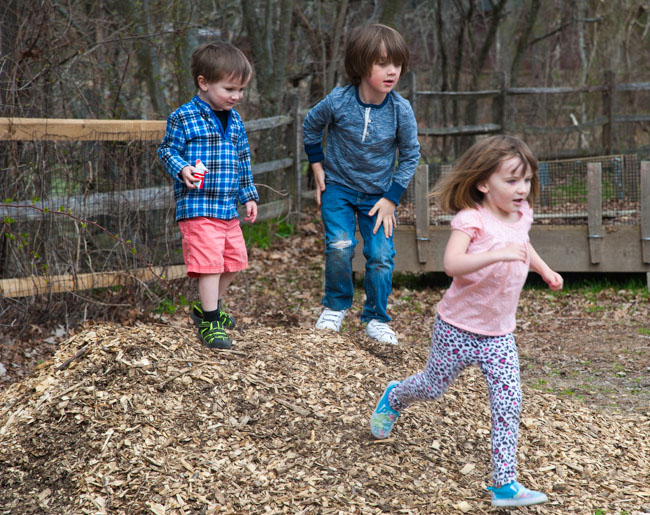Children respond with language, laughter, and enthusiasm while running through the woods with a friend to find a special stick, or watching a baby sheep sleep with a mother, or while jumping off logs and pretending they fly. The combination of the outdoors and nature and play helps children much more than sitting at a desk at school with a therapist looking at pictures. I do my best work with young children in the natural environment.
When I work with a dyad, two children who are compatible, I take them outside. While they are engaged in a motor activity, I teach them the rules of speech pragmatics: turn taking, eye contact, sustaining an interaction on one topic, listening to a peer, narrating actions and commenting. This environment helps them engage and remain present in their interactions.



